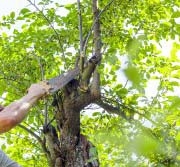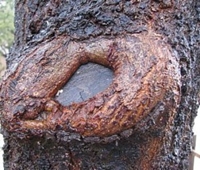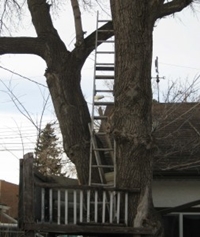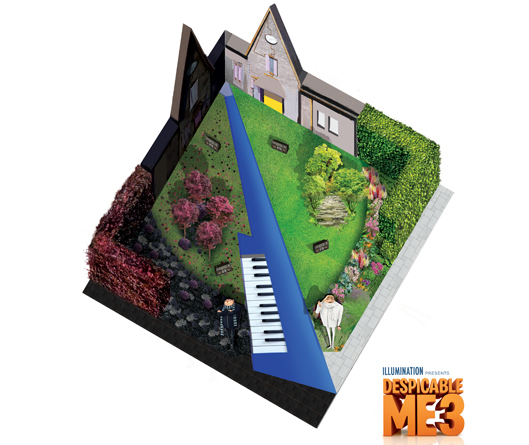Trees have to be one of the most wonderful of all living things. They support and enhance the lives of so many species, not least ourselves, and demand so little in return. However, their use in domestic situations is often misguided and misplaced; light blocking, space hogging, root penetrating, bird dropping and wall tipping are just a couple of problems they can cause when poorly considered.
The initial honeymoon period experienced after the ill-considered planting of a garden tree is often followed by a period of reflection, questioning and frustration. This tree planter’s remorse is itself often followed by occasional head scratching urges to tackling the wayward branching of poor species and location deicsions.
To assist you through this period I have assembled a sure-fire, five-point plan of how not to go about it.
1. Assessment: It is best avoid spending too much time on this. Rather than attempting to retain the natural structure of the tree, or identifying issues like dead, diseased or crossover branches, you are better to just go at it. Avoid looking at the tree from a distance and start by simply cutting away the branches closest to you. If a neighbours tree over hangs your garden be sure to cut it back to the boundary line in a rough pattern. You might be tempted to discuss this with your neighbour and come to a compromise whereby the tree’s integrity is retained, but in order to get it wrong just go for it. Don’t forget to lob the branches over the wall afterward.

2. Timing is everything. Try to ignore any advice in relation to pruning in dormant periods (winter typically) or after flowering for certain species. It’s much better to prune in mid-summer when the trees are in full leaf. By doing so you will vastly increase the likelihood of causing infections in the tree and may also encourage unusual growth patterns. A huge benefit of summer pruning is that heavily leaved branches can cushion falls from unstable ladders.

3. Making the right cut. Cutting in the right place is critical for tree pruning. Advisers will tell you to make a number of cuts along a branch to ensure safety and to cut parallel to the branch bark collar. If you are intent on getting it wrong, the best course of action is to locate the largest branch and take it down with one cut, cutting downward as close to the trunk as possible.

4. Safety first. Safety is extremely important in relation to tree pruning. Professional arborists spend many years training and are fully insured, but if your intent to make a bags of it, you can employ ordinary household furniture to provide precarious purchase. Items like stacked plastic furniture, wheelie bins and kids playhouses are ideal. You should also consider borrowing your mate’s chainsaw, never mind the required certification, you’ve probably seen American Loggers and sure what’s to know?

5. A right tool. Pruning saws, rope saws, chainsaws, loppers, harnesses, safety ropes…the list is endless and expensive. To do a right bodge job, use things like blunted axes, junior hacksaws, bolster chisels, jumping up and down on the branches, and if space allows, a rope tied to the back of a small car.

And finally
6. Employing a professional: If you are really intent on getting it completely wrong, then you should not employ a professionally trained arborist/tree surgeon, especially one accredited by the Arborist Association. These guys are consummate professionals, fully trained and insured and will do an amazing job, so you’re sure to be disappointed. Be sure not to look at their website. Better to respond to one of those flyers from the lads in the van, you know the ones. Sure they know what they’re doing and are sure to get it completely wrong.

I have been working in the horticulture industry for 15 years and have numerous qualifications in related fields.
- 2010-2012 MSc Technology and Learning (Focus on creativity training)
- 2003 BSc Landscape and Garden Design
- 2001 Diploma Garden Design (student of the Year 2001)
- 1998 Certificate Amenity Horticulture
- 1992 Certificate in Marketing
Employment
- 2011 – Editor of the trade journal Growtrade
- 2003 – 2009 Editor Horticulture and Landscape Ireland www.hli.ie
- 2002- present Lecturer in design and horticulture at SCD
- 2004-05 Developed and delivered evening certificate course in garden design for the Dublin Institute of Design
- 1995-1997 Nursery Supervisor Netherlands
- 1990 – 95 Retail Manager Dunnes Stores
Source: Barry Lupton – Top Five Ways Not to Prune a Tree…- Barry Lupton ‘Design Guru’





